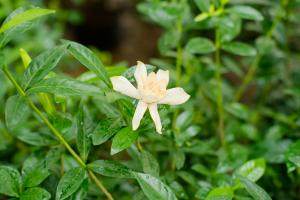How Far Apart Do You Plant Arborvitae Trees
Arborvitae trees are a popular choice for landscaping and can provide a great way to create privacy in your yard. When it comes to planting arborvitae trees, one of the most important questions is how far apart should they be planted. In this article, we will discuss the ideal spacing for planting arborvitae trees and some important factors that can affect how far apart they should be planted.
Spacing Considerations for Arborvitae Trees
When it comes to spacing arborvitae trees, there are a few factors to consider. The first factor is the variety of arborvitae you are planting. There are many different species and cultivars of arborvitae trees, and some may require more space than others. For example, some of the larger species may require up to 20 feet of space between each tree, while some of the smaller cultivars may only require 3-4 feet of space.
Another factor to consider is the purpose of the arborvitae trees. If you are planting the trees for privacy, you will want to space them closer together than if you are using them for ornamental purposes. When planting for privacy, you will want to use a tighter spacing to create a denser screen.
The soil conditions and location where the trees will be planted should also be taken into consideration. Trees planted in sandy or loamy soils may require more space between them than those planted in clay or compact soils. Additionally, trees planted in more exposed locations may require greater spacing to allow for proper air circulation and reduce the risk of damage from wind or other environmental factors.
Ideal Spacing for Arborvitae Trees
The ideal spacing for arborvitae trees can vary depending on the factors discussed above. Generally, spacing arborvitae trees between 3-6 feet apart is common. This spacing is suitable for most arborvitae species and cultivars, and will allow for adequate air circulation while still providing a dense screen when planted for privacy purposes.
If planting for ornamental purposes or to create a visual effect, spacing the trees slightly farther apart may be desirable. Spacing arborvitae trees 6-10 feet apart can create a visually pleasing effect while still allowing the trees to grow and fill in over time.
Conclusion
When it comes to planting arborvitae trees, spacing is an important factor to consider. The spacing required will vary depending on the species and cultivars of the trees, the purpose of the planting, and the soil and location where the trees will be planted. As a general rule, spacing arborvitae trees 3-6 feet apart is ideal for most situations, but adjusting the spacing based on the specific needs of your planting can help ensure the success of your trees and create a beautiful and functional landscape.

 how many times do yo...
how many times do yo... how many planted tre...
how many planted tre... how many pine trees ...
how many pine trees ... how many pecan trees...
how many pecan trees... how many plants comp...
how many plants comp... how many plants can ...
how many plants can ... how many plants and ...
how many plants and ... how many pepper plan...
how many pepper plan...






























